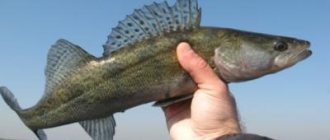In winter, predator hunters use different tactics and strategies. Some run all over the pond with a spoon, hoping to catch a perch, while others methodically and purposefully look for white fish with a jig, fishing for all sorts of interesting places in the reservoir. Still others prefer night hunting for bream. Many anglers use live bait. Each of the strategies noted has its pros and cons. Today we will talk about the nuances of bet fishing.
You can go fishing if the ice shell is at least four centimeters thick. Only such ice can easily withstand the fisherman and his full equipment. Stepping onto thinner ice can lead to unexpected swimming.
During the first ice, the predator is characterized by active feeding and an excellent reaction to live bait. The thicker the ice, the less active the pike. In the dead of winter, the predator feeds once every couple of days. In this case, meals take place in the morning (before dawn and up to a maximum of 11:00) and evening (from 16:00 until dark) hours.
Information: an exhibition of ten bets takes 30-40 minutes.
Often the first bites make themselves felt before dawn. In this case, bites are invisible, they are determined by the click-shot from the triggered spring.
Choosing a place to bet
A good location is an 80% guarantee of an enviable catch.
Pike is an ambush predator. Therefore, you should focus on areas with snags, bushes, reeds and other aquatic vegetation, depth changes, and edges.
If there are no visible places with vegetation sticking out above the water, you have to start fishing by measuring the depths. To search for changes in depth, holes, and submerged snags, it is best to use an echo sounder or depth gauge. The main rule here is this: it is better to spend extra time looking for interesting places than to place bets at random.
Fishing for pike on a balance beam on frozen peat bogs
How to catch perch and pike with live bait
Catching pike in the lake - rules for successful fishing
It is impossible not to admit the fact that the balancer is a deception with a great future
It is especially helpful in those reservoirs where the pike is unfamiliar with it and does not cause any fear, which greatly increases the likelihood of overall success. In my fishing I use models from both well-known brands and “nameless Chinese”. Moreover, neither I nor the fish noticed any significant difference between them. In my opinion, the color of the balancer doesn't really matter. I successfully caught pike with bright, irritatingly colored models at depths of up to 2.5 meters, and vice versa, with dull and nondescript ones at depths of over five meters in non-crystal clear water.
For those who want to master fishing with a balance beam, it is important to know that this is a bait for very active fishermen; it is not for nothing that they say that a sharp drill is the balance beam’s first friend. And usually on such fishing you have to do 70-100 or even more holes, not everyone can do it.
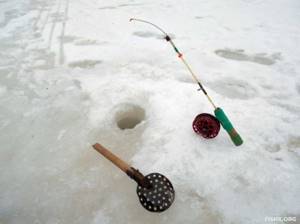
Betting
The widest possible placement of bets is encouraged - about 35 m between tackles.
Tip: set the extreme position from yourself at a distance of 200 m. This trick allows you to cover the maximum possible area.
Location of live bait relative to the bottom
The height at which live bait rises from the bottom is an equally important factor that determines fishing success.
The lion's share of fishermen determine the optimal location of live bait above the bottom as follows: place the sinker on the bed of the reservoir, make four or five turns of the reel and fix the flag. Often this method fails from the start. A legitimate question arises - why? It's all about the peculiarities of the location of the predator's eyes. The pike sees best around itself and above itself. Therefore, it is more correct to raise live bait above the bottom by one to one and a half meters.
Fishing using a winter bet
A standard winter bait is a circle, to the base of which a bite alarm in the form of red fabric and a high stand with a spool of fishing line are attached. The optimal thickness of the fishing line is from 0.3 to 0.35 mm.
Fishing with a lure is no different from fishing with a spinning rod, but a leash is often used to avoid missing large fish. The load should be selected depending on how strong the current in the reservoir is. For bait you need live bait - a small fish caught in the same reservoir, for example, ruff or roach.
Fishing depth
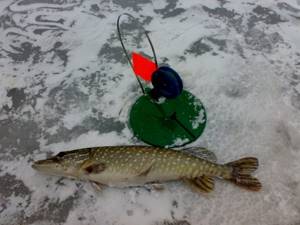
In the dead of winter, in small bodies of water that are heavily overgrown in summer, algae actively rot, die and fall to the bottom. For this reason, carbon dioxide is concentrated at the bottom, driving away the fish. Possible solutions in this situation:
1. Raising the rig with live bait higher, right up to the ice.
2. Use of equipment without a sinker or with a minimum load. The baitfish will move to the place with the highest concentration of oxygen.
The second option for solving the problem has a big disadvantage: the live bait will look for cover, which can result in tangling the equipment.
My opinion
But still, the hour came when it became unbearable for me to deal with waiting for bets, and I decided to give my heart to the balancer. This decision was also prompted by a fishing trip that happened two years ago, when I caught a lot of pike on the girders. The bets are now at home, just in case, and I’m not so interested in fishing with them anymore. There is a whole complex of reasons: I don’t want to kill these large pikes, and the very essence of fishing has ceased to be attractive. And similar sentiments are observed among many winter fishermen. People are moving away from live bait fishing by switching to a balancer, especially since with it, in addition to pike, there is a great chance of hooking large perch and pike perch. And let the toothy one rest, we will deal with it in the summer, and especially in the autumn, which is rich in biting.
Source: fishx.org
Balancers, girders, winter fishing
Choosing live bait for betting
Pike, according to popular belief, is an omnivorous predator. Its diet includes sick, wounded, passive fish. Therefore, the predator is called the orderly of reservoirs.

Although pike are omnivorous, they are usually in no hurry to grab unfamiliar potential prey. Therefore, as live bait, you should choose the fish that is most abundant in the reservoir.
Taking into account the preferences of pike, we will assign places to universal live baits:
I. Roach. Even in peat bog canals where roaches are not found, pike often prefer this particular fish.
II. Crucian carp. This is perhaps the most durable live bait.
III. Grass perch.
IV. Rudd, silver bream, white bream.
Many experienced fishermen say that the notorious gudgeon does not work or shows minimal results. It is better to refuse chub as live bait in advance, since this is a rare fish in our country.
Fishing for pike on a balance beam on frozen peat bogs
How to catch perch and pike with live bait
Catching pike in the lake - rules for successful fishing
Balancer or girder
In general, I believe that the pike balancer is still a pursuit of the number of medium-sized toothy ones. But to improve the quality of catches, fishing with live bait is more suitable, with which it is much safer to hunt for solid fish. In many reservoirs, toothy fish are actively caught not only with girders, but also with balance beams. And it is not surprising that when comparing the results, you involuntarily contrast one deception with another.
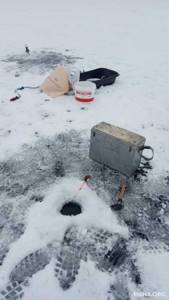
It is impossible not to admit the fact that the balancer is a deception with a great future
It is especially helpful in those reservoirs where the pike is unfamiliar with it and does not cause any fear, which greatly increases the likelihood of overall success. In my fishing I use models from both well-known brands and “nameless Chinese”. Moreover, neither I nor the fish noticed any significant difference between them. In my opinion, the color of the balancer doesn't really matter. I successfully caught pike with bright, irritatingly colored models at depths of up to 2.5 meters, and vice versa, with dull and nondescript ones at depths of over five meters in non-crystal clear water.
For those who want to master fishing with a balance beam, it is important to know that this is a bait for very active fishermen; it is not for nothing that they say that a sharp drill is the balance beam’s first friend. And usually on such fishing you have to do 70-100 or even more holes, not everyone can do it.

But fishing with bets - zherlitsy - has an ancient history, it is more measured and productive
It is impossible to describe the whole gamut of feelings exposed by the contemplation of a fluttering piece of bright matter. At the same time, it is an undeniable fact that truly large pikes are caught in winter using live bait, and in the world of artificial baits such trophies are a very rare and isolated occurrence. I myself went through many years of live bait practice, and about twelve years ago I began to simultaneously master fishing with a balance beam. Over the years, my opinion on the effectiveness of these gears has not changed. My largest pike, caught on a balance beam, weighed 4 kilos. And such trophies were very rare. At stake, this is a fairly common fish, and to improve the quality of the catch, I always preferred fishing with live bait, with which it is much more accurate to hunt for large toothy fish. As for the number of zherlits, at one time I was clearly convinced that with 30 bets you won’t catch more than 5-10. I think there won't be much difference even between ten and five. By the way, in many regions fishing is allowed for no more than 5 fishing rods and people catch so much that they cannot carry it away.
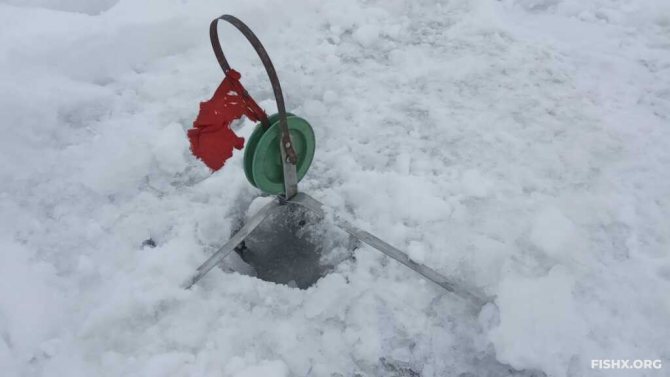
The nuances of fishing with bets
When the pike is active there are no problems - all the flags flash. But what to do if the predator does not want to be active? You can do the following:
1. Wait and hope for luck.
2. Challenge yourself to find active, feeding fish.
It happens that the rate lasts all day without a bite, and in the evening twilight it flares up and brings a pike, and often a trophy one. When waiting for the pike to start feeding, there is a chance of missing an active pike 50-100 m to the side. As you can see, there is no clear answer as to which tactic is better. What should I do? You can watch your neighboring fishermen. If they are distributed throughout the entire reservoir and are, as they say, deaf, it is better to stay in your place and wait until victory. Alternative: leave seven bets stationary, and go with three to search for a predator.
If your neighbors are doing well, you can:
• move the live bait, lifting the rig up and down;
• change the depth of some bets;
• experiment with types of live bait;
• change place.
In any case, you shouldn’t leave your place right away. This is the last resort. In winter the days are short. And developing new places takes a lot of time.
Construction of stakes (rails)
It is not difficult to recognize a master of ice fishing, if only by his ability to tie knots in the cold. Some people immediately wet them with saliva to make the knot hold tighter. But this is so, a saying. And a fairy tale, like Pushkin’s, “a lesson for good fellows,” lies ahead. Moreover, as many bettors as there are craftsmen on the forums. They make the girders themselves, using only purchased bases. They insist on their own experience, not the same as in the training videos. They catch it on a double line, without a leash. Or with a vein leash, believing that tungsten or other alloy pushes the pike away from the bait. There are also some peculiarities in terms of timing. During the active period of freeze-up and after deep winter, for large fish, it is recommended to use heavier tackle - a metal leash in combination with a main line with a cross-section of 0.6 mm. Accordingly, the 10th tee with roach or crucian carp weighing 80-100 grams. And during the deep winter season, the bait is thinner, the fishing line with a leash is thinner - 0.5 and 0.4 mm. respectively .
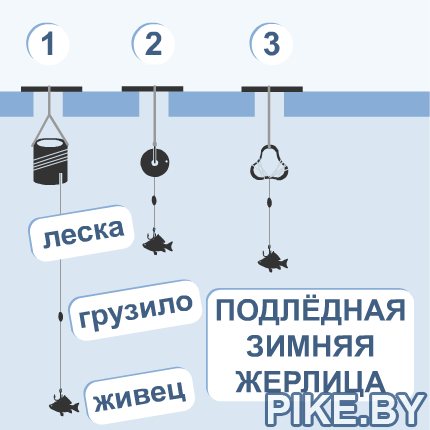
Rearrangement of bets
According to generally accepted opinion, the pike is a loner, controlling its territory and not allowing other individuals into its possession. And having caught one pike, it is necessary to change the hole, since most likely there is no predator nearby. At the same time, one must understand that the rightful owner of its possessions is a large individual - from three kilos. Therefore, having caught such a fish, you don’t have to wait any longer in the bite zone. It would be better to move the bet. If you catch a specimen up to two kilos, you can risk waiting for the next bite, since fish of this weight category (and below) are characterized by “schooling”. There is a chance of getting from one hole to four predators.
Betting fishing is an extremely exciting and popular type of fishing in our country. But this is the easiest way to catch pike. Small bodies of water completely covered with flags are very depressing.
Catching pike with winter fishing rods
This is the most general information, but on fishing forums you will find answers to a variety of questions - how to fish with girders in shallow water, in snags, in particularly severe frosts, and so on. A funny incident, they say, happened at the Rudnensky VDHR, near Slutsk. At a shallow depth, the bet worked, but the pike went into the grass, with a hook. Neighbors came up with drills, drilled holes, and someone was able to use a hook to find and free the fishing line. We pulled the pike out of the new hole. In this regard, seriously, I would like to say that those who consider girders to be a departure from classical fishing are not entirely right. Just like with a winter fishing rod, you need to know where it is best to make holes, how to set up the correct tackle, how to catch the shot flag, and hook on time. Author: Pike.Pinsk©
Reliable bets for winter fishing
5 (100%) 1 vote
Where to look for pike on the river in winter on the first ice
First you need to know that pike are not a fan of changing their usual stopping places. He tries to stick to them all year round, changing only when circumstances force it (age, when pike go deeper and harsh winters, when creeks/floodplains freeze to the bottom).
Based on this, on the first ice on the river, pike rarely move from their summer camps.
What are these places:
- Floodplain with dense algae and shallow depth. Usually there are a lot of egg capsules growing in such places. But always look at the depth, it should be adequate in winter. For a medium-sized pike (up to 1.5 kg), 30-40 cm is enough.
- Deep floodplain (for rivers from one and a half meters). In such areas, the pike will stay closer to the shore, but only while the ice is still thin. Also fraught places. Often this is the coastline, since there is no current here and snags appear naturally, by falling branches from coastal trees.
- Backwater, closer to the grass. Lots of food, weak current - a convenient place for hunting.
- On the riverbed along the edges. In winter you can easily find it without special equipment. By measuring with a brick on a rope.
- The bends of the river wash out holes on its outer side. Such places are also promising.
- Places with reverse flow. It is difficult to search; usually such points are remembered from open water.
- Sharp cliffs along the river. Steep banks.
- There are snags, but it’s not so important to navigate by the trees on the riverbed. Branches can often be found in unexpected places. It's hard to find without an echo sounder.
- Places where the riverbed flows into the floodplain. And also near the confluence of the keys.
- On large floods this is a whole complex of places, similar to searching for winter pike in a reservoir. Coastal area with grass, pools, holes. Channel edge. Near the islands. Sticky places.
Another good way to search is to study the reports of other fishermen. For this we have created a special map. Here it is - where to catch pike. Each report has a catch date, which is very convenient for seasonality, and stories from fishermen will help you navigate the fishing nuances.
To summarize, after the first ice on the river, pike are caught in the most familiar places. But on ice it is much more convenient to fish locally, with the same fishing rods or active search with a balance beam.
Strategy for Live TV

The ending of the match is often very tense and productive, so live bets on the total under or over are profitable. However, this applies to matches where both teams are interested in winning.
- At the end of the tournament, teams that do not claim leadership positions often refuse to take risks when the score is satisfactory.
- Careful play results in few goals.
Therefore, you should not bet more on the total.
What are arbs in bookmakers
A fork is an opportunity to bet on one market with a guaranteed profit.
Fork arms are the selections that make up the fork.
Formula for calculating a bookmaker's sure bet:
P = 1 / K1 + 1 / K2 + … + 1 / Kn
, where Sp is the probability in decimal fraction, K1, K2, Kn are the odds for the selections of one market, n is the number of selections in this market.
If Sp is 1, it's a fork.
To play on arbs, you need to bet in different bookmakers or wait for a suitable change in the odds in one bookmaker.
Read about the operating principles of bookmakers here:

How bookmakers work: what they are, how they work and how they make money
Bookmaker's clients understand sports, but the majority play at a disadvantage. One simple trick gives bookmakers profits over the long haul.
Mentality in betting for big multipliers
High odds mean significantly less chance of the bet being successful. For example, concluding a deal with odds of two, taking into account the margin, we have less than a 50% chance of success. And a bet with a multiplier of 4 gives us only about 25% chances. And the more the coefficient grows, the lower the probability drops. This means that we will lose more often than we win.
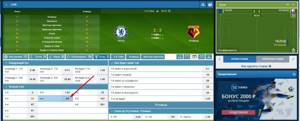
The human psyche is very sensitive to frequent defeats and loss of funds. We need at least 50% wins so we don't feel like losers. If a black streak is possible even at average odds, then by betting on high multipliers, you are guaranteed to experience losing streaks. You will definitely have winning bets rarely, and losing ones – often.
But here it is important to always remember - this is the peculiarity of betting on large odds and one successful forecast can cover even five to ten unsuccessful ones and bring you into a plus. Under no circumstances should you despair and start to recoup. Only a positive attitude and moving forward.
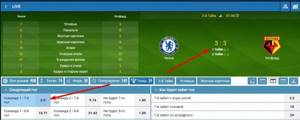
Bank management
Since losses when betting on high odds are a constant occurrence, you need to allocate a small percentage of your bankroll to one bet. If, with odds of up to 2, you can afford to bet 5% of the deposit, then when betting on large multipliers, it is better to limit the bet to one percent. As you can see, you won’t be able to earn decent money with a small bank, because 1% will be a very small amount. A large bankroll is what a better must have if he wants to make a profit by betting on high multipliers. Let's form two simple rules:
- A big bank will allow you to get a lot of income;
- Allocating 1% of the deposit to one bet will save you from black streaks and will guarantee you to stay in the game.
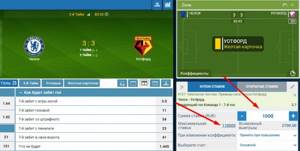
Now we know how to avoid psychological traps and how to properly manage finances when betting on high odds. This means that you can begin the most interesting part – considering a strategy for betting.
See also: Secrets of sports betting: from professionals to beginners
How to correctly place live bets on football
Date: 07/02/2019 | Time: 13:40
229
Live betting is a separate “kitchen”, which has many serious differences from simple bets before the start of the game. This mode brings with it both pros and cons. As always, the “tops” and “roots” are divided fairly: advantages for those who fumble, and tricks for beginners. So in this review I want to share with you a number of rules, analysis of situations when I prefer to bet on football live. I will also give several situations when it is better to refrain from betting, although many beginners “load” at this moment.
The main problem of live for beginners is the emotions and speed of everything that happens. Firstly, you need not to give in to excitement, try to soberly analyze the further course of the game. The starting point for conclusions should be: a preliminary forecast, plus what was seen (or at least tracked using info-graphics and statistics) in the period that has already passed. Secondly, you need to act quickly. You have to learn this, get your teeth into it. At first there will be mistakes - this is normal.
Well, for experienced players, live gives the opportunity to catch high odds and line distortions. The bookmaker's program builds odds based on changes in the score and the passage of time. In all this one can find very strong distortions. Here are some of these situations that we will talk about.
Increase in coefficient
It is better to start your first acquaintance with live with this technique. We choose a bet on a match before it starts, but the odds are not very satisfactory. Those outcomes are suitable for which, with an intermediate score of 0:0, the coefficient increases over time: victory, individual total is more than 1.5, total total is more than 2.5. Let’s say before the start of the match they gave from 1.50 to 1.70 for this. We want to take 1.80-2.00.
There are no tricks here. We managed to increase the odds to a goal and started playing. We didn’t have time, there was a goal from the selected team - we don’t bet, or we wait for some interesting development of events, or we move on to tracking other games. If the opponent scores, then the total is postponed for now, but a victory, even a zero handicap, can already be considered based on the increased odds. This is a separate strategy, which I wrote about in detail earlier.
Detailed practical instructions “IDEAL FINANCIAL PLAN FOR SPORTS BETTING” As with 10,000 rubles. reach an income of 100,000 rubles. Find out more >>>
Total less after activity
The following strategy is activated in the event of an active scoring start to the match. For example, when in the first 20-25 minutes 2-3 goals are scored. This means that the line for totals will jump significantly. There is still quite a bit of time and the algorithm is forced to set the borderline total at the level of 4.5 or 5.5. The task is to quickly set, before the coefficient starts to drop, on the corresponding TM. You can take from 1.70 to 1.90.
You need to choose those leagues where high-scoring matches are rare. That is, all sorts of Australia, Scandinavian countries, the USA, Asia - bypassed. There are also friendly games, women's and youth football. In fact, the classic top European leagues are suitable, where the borderline total before the match is usually set at the level of 2.5-2.75.
Due to this imbalance in the moment, after scoring 2-3 goals quickly, there is a large gap between the situational total and the long-term average. As you might guess, even at an average distance, such bets will be placed more often than any pre-match bets, at the same odds.
According to my observations, the pass rate is not lower than 75-80%, and the coefficient allows you to be in the black even with 55-58% pass rate. Of course, such events do not happen so often in suitable leagues and matches, but this is the only disadvantage of this strategy, in my opinion.
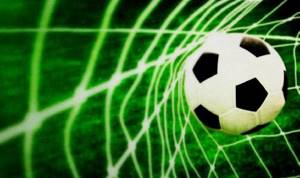
Individual total in the second half
We enter the match at the beginning of the second half, if one of the teams wins by one goal: 1:0, 0:1, 2:1, 1:2, and so on, 3:2, 2:3. A goal that puts someone ahead can happen before the 60th minute. So, at 65-70 minutes we bet on the individual total of that team, the office is inferior by +0.5. That is, ITB(1.5) with the score 1:2, or ITB(0.5) with 0:1. Teams must be equal, with high performance, or the temporarily inferior team is even stronger.
At such minutes, the required IT is estimated by the odds to be two or even more. This is where all sorts of scoring leagues work best: MLS, Australia, Norway, Denmark, etc.
Goal in the last minutes total total +0.5
The next strategy is activated under exactly the same conditions as in the method above, only if the score does not change until 80-85 minutes. Here we take the total total +0.5. If 2:1, we take TB(3.5), 3:2 – TB(4.5). I think it's clear.
The coefficient for this matter at such minutes is also already above two, and in the region of 85 it can reach 3.50 and higher. The abundance of late goals, including in added minutes, plays into our hands. And in the mentioned leagues, the referees do not skimp on compensated minutes; they can add 5 or 10 minutes.
Since these two strategies can be used together, I usually divide the amount allocated for the match into equal parts. I play the first one early on the ITB of the inferior team, and the second one on the total total.
With such distance odds, you can play simply flat, or ladders, or even catch up, starting with a small percentage. Just dozens of games in a row with such a scenario and without a late goal is strange. Well, in order to be on the safe side and not lose the bank due to a long series of minuses, it is better to set a limit on the number of catch-up steps. For example, we limit ourselves to 5-6 steps. And even if the last one loses, we simply roll back to the starting bet. Yes, we lose a third of the pot, but we can win it back in live quite quickly. It's better than digging in and risking losing everything. But let's continue live.
Live betting in friendly matches
Oddly enough, you can bet live and on friendly matches. Of course, we are not talking about bets on victories, other main outcomes, yellow cards and the like. After all, no one is interested in the result of a friendly match, and the judges are loyal. You just need to start from this logic of not caring about the result. You need to watch the beginning of the match, make sure that the game is of an exhibition nature, the coach has set up sharp attacking lineups. If these are fundamental rivals, top teams, then even better. This means the stands will be full and demand a show. In such games you need to bet more on the total. If there is no goal in the first 15-20 minutes, then we bet on TB 2.5 or 3. If a goal happens, the heat sets in, then we wait at least 5-10 minutes and bet on the total +1.5. Well, we can catch more totals if the teams get hotter in the second half. Playing 0:0, or even 1:1 in a game with this status is very rare.
Of course, not all friendly matches are suitable. When these are games between mediocre clubs on some training fields, without fans, then there is no need to take it. Well, or be sure that these are fundamental rivals, most often from the same league, or from countries with complex relationships. But you already need to understand this, understand psychology and even international politics.
In general, we were convinced that the match was of an exhibition nature, a show - we take TV. And this applies to all sports! Tennis, hockey, basketball, boxing. If the only point of the game is spectacle, then we set the TB by games, goals, points, rounds.

Bet on the current outcome
Well, some advice on what not to do.
The score is in favor of one team, for example, 2:1. There are 5-10 minutes left and “popan” bets a large amount on P1 for odds of 1.20. Or the same thing with a draw, say 1:1, and they bet on “X” also a few minutes before the end for a similar insignificant odds. Or total, the same thing. The score is 3:2, and they take it in 5 minutes, which will be TM (5.5), also for a mini-odds. Well, do you understand where this is going?
There's no need to play anyway. These are not “the surest sureties,” but the path to failure. You will lose too often, and you need to win back losses for 4-6 wins in a row at such insignificant odds. It’s better to catch these very late goals in the last minutes for odds of 3-4 than their absence for 1.15...
I hope it was useful and you can successfully apply something in your practice.
Share with your friends:

Category: Live betting
Tags: Live, Goals, Live, Bets, Strategy, Totals

